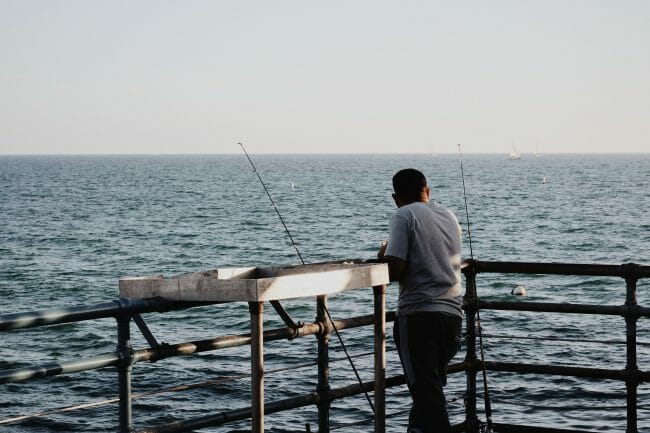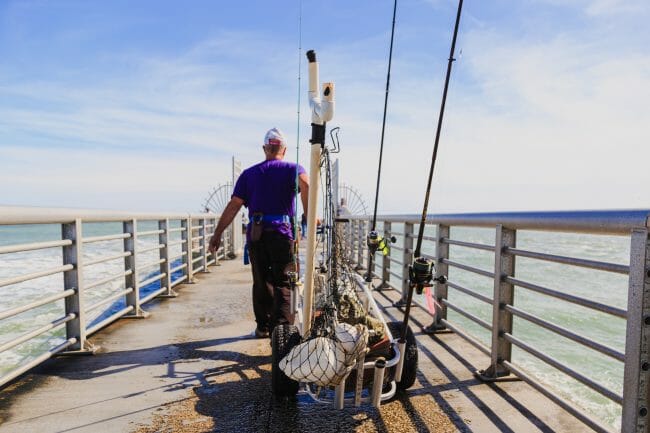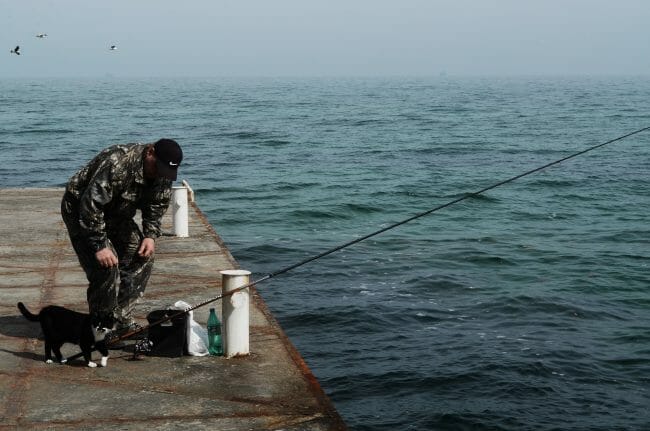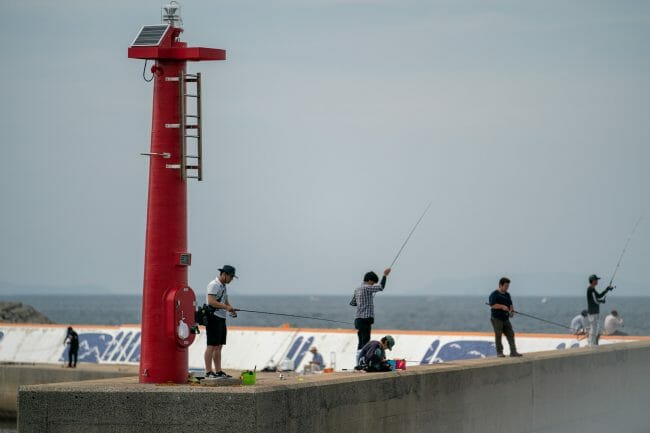If you have fished on any kind of pier that is a decent height above the water your probably aware that once hooked actually landing your fish can be a bit of a pain, especially for big fish.
The most obvious solution to this problem is a pier net.
With smaller fish you can either hand line them or dead stick them on your rod with the reel locked down, but once you are hooked into anything substantial then a pier net is the best choice.
Most pier nets will be what is commonly known as a drop net.
Drop nets for pier fishing look a lot like a crab net.
The only issue with using a crab net is that they usually not designed to take a lot of weight and the rim of the net can bend or buckle with too much weight in it.
Gaffs can be used on a pier but they will pretty much kill any fish once hooked on them, some piers have banned the use of gaffs on them for this very reason.
Pro Tip: put knots in your rope every two feet to make hauling easier!!!
All good drop nets will have a heavy steel frame(usually round) and strong well stitched mesh.
50 to 100 feet of rope should be enough for most piers and anything more can make the net a little bit harder to transport and really long ropes can be much easier to get knotted up.
Best Pier Net
1. Fabrill 36 Inch Drop/Pier Net
The Frabill drop net has a big 36 inch mouth and a solid steel hoop frame that can handle some fairly decent sized fish.
It comes pre-rigged with 50 feet of rope so it’s ready to go out of the box.
The 1/1/2″ mesh is quite solid and is 36″ deep giving you a decent volume even for some thing like a ray or small shark.
2. Promar Deluxe Hoop Nets
The Promar Deluxe double hoop net has a large 36 inch upper hoop and a smaller 14 inch hoop.
The lower hoop helps the net to maintain it’s shape and also to keep the mesh down once it hits the water.
It comes with 100 feet of poly rope and also has two plastic floats included one over the tie point to the et and the other at the opposite end.
3. EGO S2 Slider Fishing Net
Not all nets for pier fishing need to be drop nets and if you are fishing a fairly low pier a telescopic conventional net with a heavy duty handle is just as good.
The Ego S2 Slider net extends from 29 to 60 inches and has a 19 inch hope. They are rated up to 20 lbs extended and 30 lbs retracted.
Pier Net
Pier nets take all of the guess work our of landing fish from a pier.
Lower it down, allow the fish to move over the mouth of the net and then haul them straight up.
They are the best option of you are looking to release your fish after catching them.
A good drop net for pier fishing will have a strong rope attached to it and a solid metal frame. This gives them the ability to pull up some fairly heavy fish.
A long handled regular landing net for pier fishing can work too providing that your pier is not to high up from the water line.
Once you get to 10 feet or more then a drop net is the best option.
How Do You Pull Up Fish from a Pier ?
There are a number of methods that can be used to pull up fish from a pier:
- By hand on the line
- Hauled up with the rod
- Use a Gaff
- Use a pier net
Clearly the simplest way to land a fish on a pier is to just pull it up with your pier rod. With the drag on the reel set tight you should haul it up.
Although this might work with very small fish it is a really easy way to damage our rod tip and it is not uncommon to see lighter especially graphite rods snap when doing this.
You can also pull the line by hand. However this mono or braid can do a lot of damage to your hands especially if a fish is thrashing around on the end of your line.
A gaff can be used to hook the fish but it will most definitely kill them so if you are planning on releasing them a gaff not a real option.
The pier net is without doubt the best method to land a fish from a pier!










